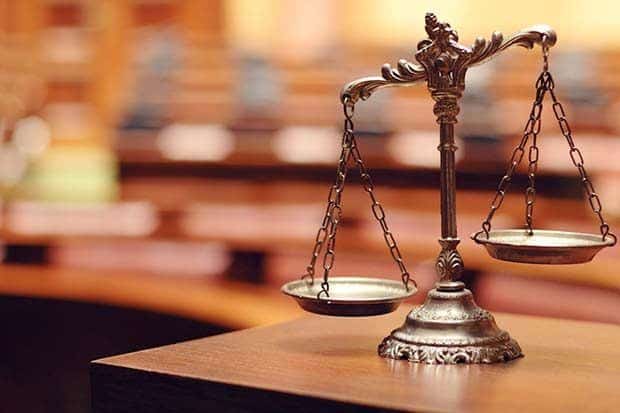BES/ GES empire cost country dearly, causing losses of almost €12 billion
The trial of the main BES case begins on Tuesday and no one can predict when it will end, writes Lusa today – as it involves 18 defendants, 733 witnesses, 135 assistants and more than 300 offences.
This mega-case – which has already reached 215 volumes after an indictment with more than 4,000 pages – begins more than a decade since the collapse of the Espírito Santo Group (GES) in August 2014.
The main defendant in the case is former BES chairman Ricardo Salgado, who was originally charged with 65 offences, including criminal association, active corruption, document forgery, qualified fraud and money laundering.
“The slow pace of the process” (Lusa’s words) has already seen some charges fall by the wayside, with others set to follow. Three of the charges relate to Mr Salgado who, in the intervening years, has developed Alzheimer’s Disease and is now in no condition, says his defence team, to take the stand, much least to defend himself.
Regarded as one of the biggest lawsuits in the history of Portuguese justice, this case, investigated by the Central Department of Investigation and Criminal Action (DCIAP) of the Public Prosecutor’s Office, brought together 242 inquiries in the main case (which were joined) and gathered complaints from more than 300 people living in Portugal and abroad.
“Due to the vast number of offences, defendants, assistants, witnesses, facts, and documents in this case, the BES computer case has eight terabytes of information, corresponding to many thousands of files”, says Lusa, explaining that the trial room set aside for this case at Lisbon Central Criminal Court in Campus de Justiça will have 67 seats for defence lawyers and assistants, as well as accommodating 16 individual defendants and some members of the public.
The trial will be broadcast live to two press rooms in buildings A and B of the Campus which can accommodate 32 media professionals. Other spaces are being evaluated to allow remote monitoring by more assistants and the general public.
For the trial, presided over by Judge Helena Susano, an auxiliary clerk has been assigned exclusively. This clerk will be supported, when necessary, by another auxiliary clerk and the other bailiffs working in the case unit in question.
The sound, evidence recording, and remote communications systems have been tested, and computer and technological equipment, including computers and screens for viewing documents, has been made available. The videoconferencing system is being finalised.
We are always told that “according to the Public Prosecutor’s Office, the collapse of GES caused losses of more than €11.8 billion”, but that belies the damage it wreaked on many hundreds of people’s lives (people who claim to have ‘lost all their savings’ in bank ‘products’ that promised high returns, and ended up turning to dust), not to mention the ‘public purse’, which was used to dissolve the bank/ create a ‘good bank’/ sell it in what was dubbed a ‘ruinous deal’ and generally make up for so much financial damage.
More than 2,000 BES/GES victims demanding compensation
The damage caused by the collapse of this private banking empire hit every kind of ‘investor’, from major league shareholders and creditors, to ‘everyday’ clients who simply believed their money was safe. More than 2,000 of these latter clients have obtained victim status in court and are demanding compensation.
As Lusa explains, these everyday clients are the ones who have been most vocal since the bank’s ‘resolution’, organising dozens of protests in towns, in the capital, in front of the ‘good bank’ that rose from BES’ ashes, and in front of Belém Palace. There have even been protests in Paris, where many of the Portuguese emigrés who lost money in ‘commercial paper’ live/ lived.
As a result of this public pressure, solutions for these victims were negotiated, but only a few have materialised (such as the partial recovery solution for commercial paper victims). Some customers have not had any solution or have not accepted the proposed solutions and are still claiming back all the money they have lost.
Given the legitimacy of their ‘victim status’, these clients are asking for compensation for being victims of property and moral damage as part of a crime. The amount claimed is at least €300 million, including moral damages.
In mid-August, the victims’ association ABESD (Associação de Defesa dos Clientes Bancários) “regretted” that, 10 years after the collapse of GES/BES, no concrete measures had been taken to protect the victims and considered that this reinforces the feeling that the judicial system “fails to offer material justice” (a criticism that is all too common in Portugal).
In a statement, the victims’ association called on the Public Prosecutor’s Office to mobilise “around solutions that give back to the victims what was taken from them”.
“Justice is not only done by punishing the guilty but above all by compensating the victims,” said ABESD, considering that the lack of compensation leads to “questioning the effectiveness of a system that, although rigorous in its investigations, is slow and insufficient in repairing the damage”.
ABESD’s statement recalled the Bernard Madoff case in the United States, saying that the Department of Justice took proactive measures to ensure that assets were returned to victims even before sentencing. Nothing like that looks like happening here, although ‘in the early days’ there was talk of it.
Source material: LUSA


























